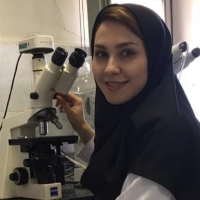Application of Taxonomic Distance and Clustering to Determine the Proximity and Similarity of Calcareous, Gypsiferous and Saline Soils of Eastern Azerbaijan in two soil classification systems
Author(s):
Article Type:
Research/Original Article (دارای رتبه معتبر)
Abstract:
In this research work taxonomic distance and clustering performance for understanding of relation and correlation between calcareous, gypsiferous and saline soils of East Azerbaijan semi-arid and arid regions were studied based on soil taxonomy (ST) and world reference base (WRB) systems. The taxonomic distance by R software and Numerical Taxonomy in Excel and clustering using R and SPSS softwares were calculated and their relationship in two systems was investigated. Then using the average amount of physicochemical quantitative data, the results of calculation and clustering compared with each other and so with opinion of the experts, that there was a good quantitative correlation between salids and salonchaks, salonetz, gypsids and gypsisols, argids and luvisols, xerepts and calcisols and gypsisols. The obtained results of four methods were almost similar and identical with each other, but use of each one had its own limits and skills. The conceptual method was based on the dominant qualitative identifiers (soil-forming factors or processes, diagnostic horizons and in general dominant morphological properties of calcareous, gypsiferous and saline soils) and coding of them, that sufficient information or knowledge and skills are necessary to achieve a good accuracy in this method. The quantitative physicochemical data were used in the centroid-based approaches numerical taxonomy and clustering and results of these methods are more reliable. The easiest method was Numerical Taxonomy, which with simple options and without any programing, forms matrix and by normalizing data, the Mahalanubis equation makes the taxonomic distance easily available. In general, these tools and calculations are useful for finding the relationship between soils in different classification systems, and quantitatively numerical findings for their correlation and association in classification systems, especially ST and WRB, which are widely used in Iran are recommended.
Keywords:
Language:
Persian
Published:
Journal of Water and Soil Science, Volume:28 Issue: 3, 2018
Pages:
183 to 194
magiran.com/p1918495
دانلود و مطالعه متن این مقاله با یکی از روشهای زیر امکان پذیر است:
اشتراک شخصی
با عضویت و پرداخت آنلاین حق اشتراک یکساله به مبلغ 1,390,000ريال میتوانید 70 عنوان مطلب دانلود کنید!
اشتراک سازمانی
به کتابخانه دانشگاه یا محل کار خود پیشنهاد کنید تا اشتراک سازمانی این پایگاه را برای دسترسی نامحدود همه کاربران به متن مطالب تهیه نمایند!
توجه!
- حق عضویت دریافتی صرف حمایت از نشریات عضو و نگهداری، تکمیل و توسعه مگیران میشود.
- پرداخت حق اشتراک و دانلود مقالات اجازه بازنشر آن در سایر رسانههای چاپی و دیجیتال را به کاربر نمیدهد.
In order to view content subscription is required
Personal subscription
Subscribe magiran.com for 70 € euros via PayPal and download 70 articles during a year.
Organization subscription
Please contact us to subscribe your university or library for unlimited access!



